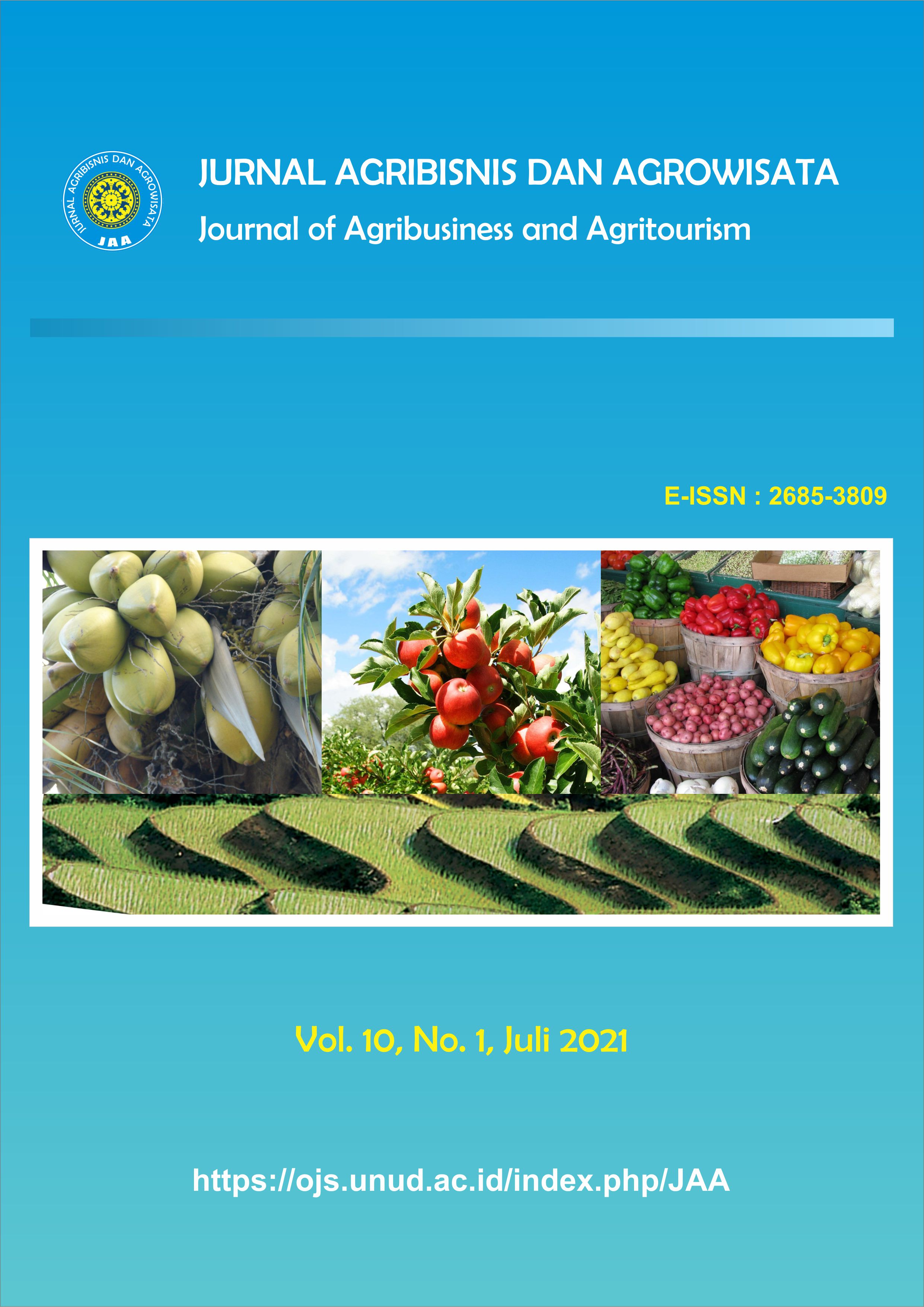Pengaruh Industri Pengolahan Salak terhadap Pendapatan Usahatani Salak di Desa Sibetan
Abstract
The Effect of Zalacca Processing Industry on the Zalacca Farming Income in Sibetan Village
The drastic increase in the production of zalacca will cause a new problem, which is the decrease in the income of zalacca farmers, due to the decline in the price of zalacca at harvest as a result of the increased supply of fruit in the market. This problem especially occurs during the harvest season. Therefore, efforts are needed to increase the economic value of the zalacca fruits into processed products that can be stored longer. There is now a partnership between the zalacca processing industry of CV. Dukuh Lestari with the Dukuh Sari farmer group and between the Werdhi Guna Food zalacca processing industry and the Werdhi Guna farmer group. The purpose of this study was to determine the effect of zalacca processing industry on zalacca farming income in Sibetan Village. The research data collection methods are interviews, library research and documentation. The analysis was conducted quantitatively and qualitatively. The research respondents were 52 farmers who were grouped into 2 groups, namely 26 partner farmers and 26 non-partner farmers. The results of this study showed that the average zalacca farming income with a partnership scheme was greater than the non-partnership zalacca farming income. Zalacca farming income with partnership was IDR 13,298,919.75/hectare while non-partnership zalacca farming income was IDR 8,947,214.92/hectare. Value of R/C the ratio of partnership zalacca farming was 2.066, greater than the non-partnership zalacca farming of 1.809. The results of the analysis showed that the existence of zalacca processing industry has a positive effect on farmers' income through partnerships. Therefore, farmers who do not have business partners are encouraged to establish cooperation if there are companies that want to collaborate in partnership.
Downloads
References
Badan Pusat Statistik Kabupaten Karangasem. 2017. Bebandem Dalam Angka 2017. Diakses online di http://karangasemkab.bps.go.id.
Badan Pusat Statistik
Mangunwidjaja, Djumali., Illah S. 2008. Pengantar Teknologi Pertanian. Penebar Swadaya, Jakarta
Margono, 2004 Metodologi Penelitian Pendidikan. Jakarta. Pt. Renika Cipta
Matovani, L.E., Tarigan, K., Kesuma, S.I. 2012. Analisis Perbandingan pendapatan petani Salak yang Menjual Hasil Panen Ke Pabrik dan Luar Pabrik di Kabupaten Tapaluni Selatan. Program Studi Agribisnis. Fakultas Pertanian. Universitas Sumatera Utara.
Mubyarto, 1995. Pengantar Ekonomi Pertanian. LP3ES. Jakarta
Soekartawi, 1995. Analisis Usahatani. Universitas Indonesia Press. Jakarta
Soekartawi, dkk. 1986. Ilmu Usahatani. Universitas Indonesia (UI-Press), Salemba, Jakarta.
Sugiyono. 2012. Metode Penelitian Kuntitatif, Kualitatif dan R&D. Alfabeta. Bandung.
Suratiyah, 2011. Ilmu Usahatani. Penebar Swadaya. Jakarta
UPT Dinas Pertanian Tanaman Pangan dan Holikultura Kecamatan Bebandem. 2017. Program Penyuluhan Pertanian BPP Bebandem.







